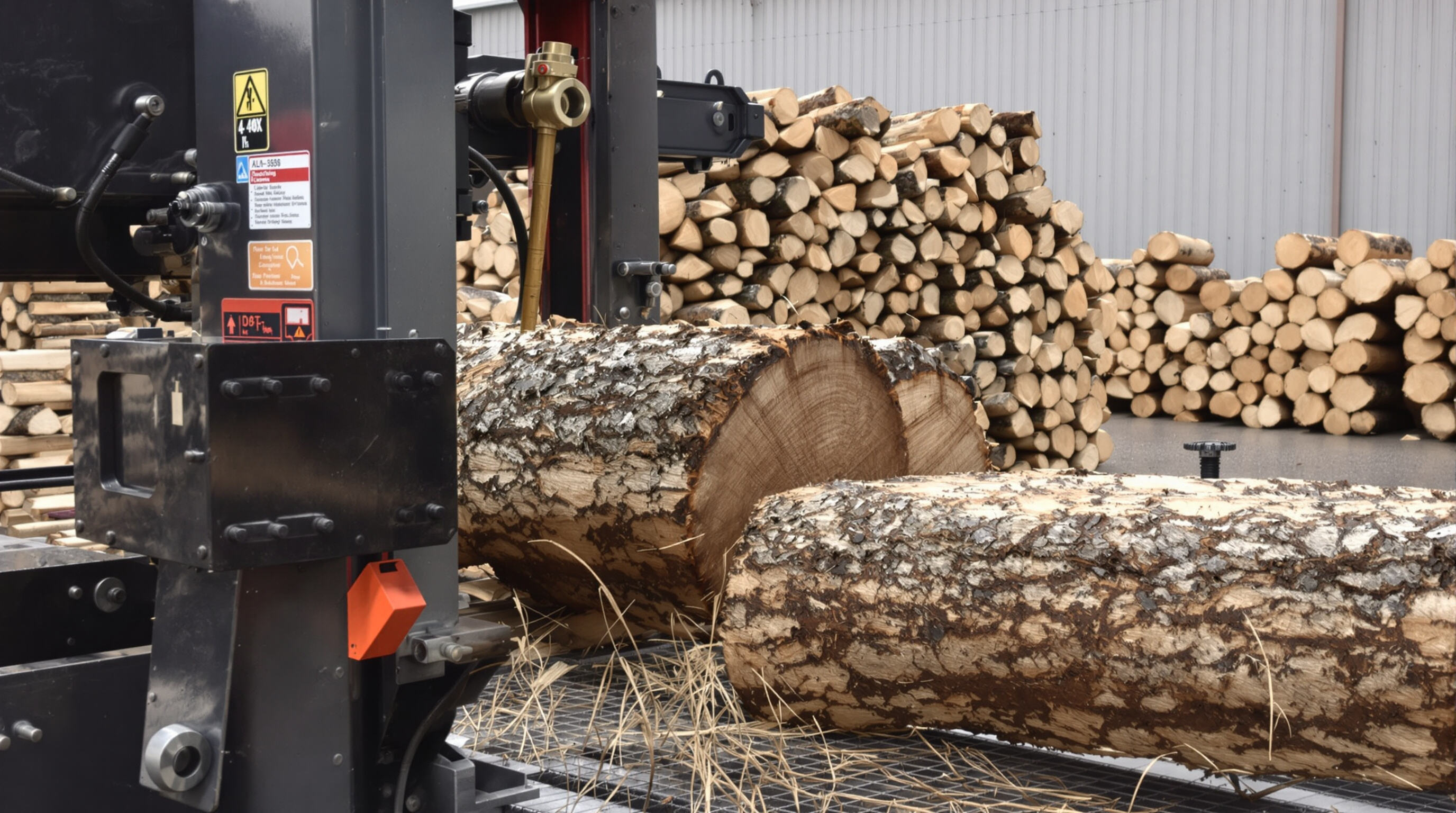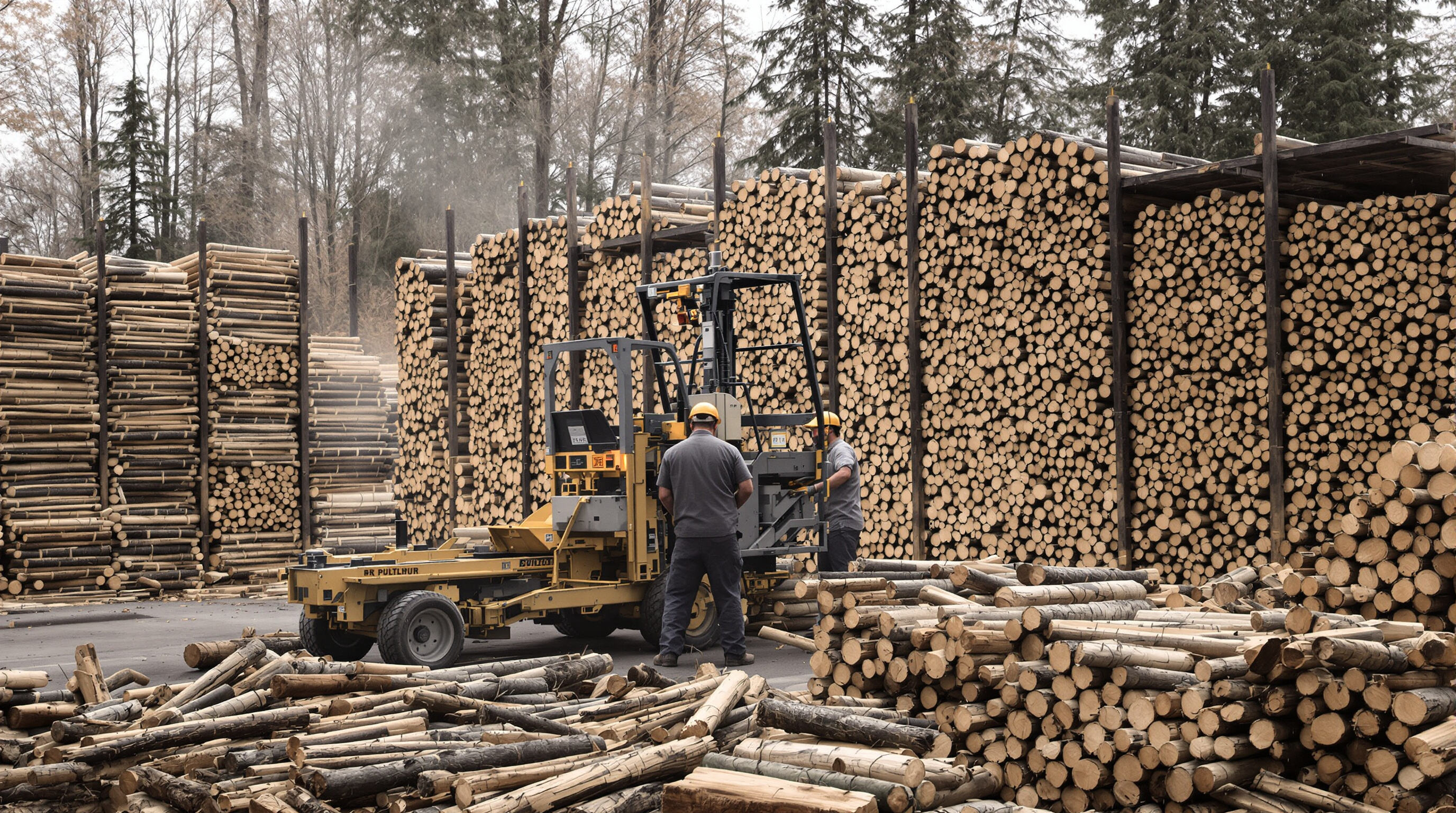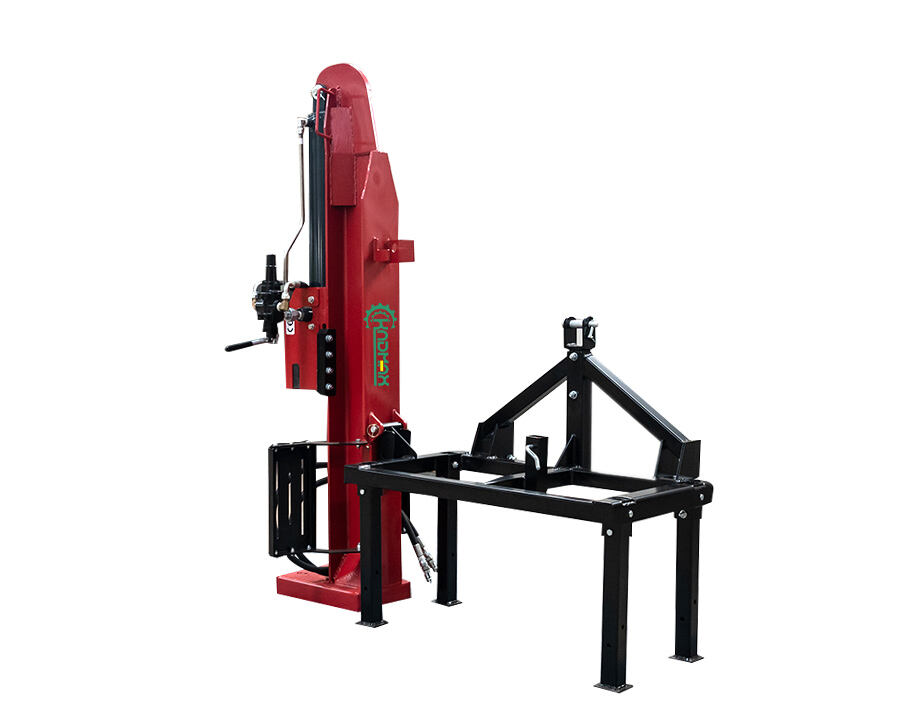The Operational Challenges and Transformation of Firewood Processing with a Commercial Log Splitter
The challenges of manual firewood processing before adopting a commercial log splitter
Back in the day, making firewood manually meant swinging axes and mauls all day long, often taking between 12 to 18 hours just to get through one cord of wood. The people doing this work ended up with repetitive stress injuries three times more often than folks in other forestry jobs according to some research from 2023 in the Occupational Safety Journal. Plus, when the wood wasn't split consistently, about a quarter to almost half of it became unsellable waste. All these problems made scaling up operations really tough for businesses, especially since labor costs ate up around two thirds of what it cost to produce firewood overall.
How selecting the right log splitter transformed operational capacity
Switching to commercial grade log splitters fixed those annoying efficiency problems by harnessing hydraulic power that can generate between 20 and 35 tons of splitting force. Companies that invested in machines with these dual stage hydraulic pumps saw their processing times drop down to around 4 to 6 hours for each cord of wood, even when dealing with big logs as thick as 30 inches across. What really made a difference was getting rid of all those mistakes people used to make positioning logs manually. With these new systems, about 98 out of every 100 splits work on the first try, which is way better than the old hand tool methods where only about half or two thirds would split properly without needing multiple attempts.
Key performance metrics before and after KNDMAX integration
| Metric | Manual Processing | Post-KNDMAX Implementation |
|---|---|---|
| Labor hours per cord | 15.2 | 4.8 |
| Daily output capacity | 2 cords | 8 cords |
| Wood waste rate | 18% | 3.7% |
Industry paradox: High initial investment vs. long-term ROI in firewood production
Commercial log splitters definitely cost more money up front compared to those basic hand tools, usually around 4 to 6 times the price. But according to a study from Forestry Economics Review in 2023, these machines actually cut down on labor expenses by about $580 for every cord of wood processed. Most businesses find that their investment pays off pretty quickly too, typically within 12 to 18 months when looking at how much more productive they become. Output jumps anywhere from 300% to 400% with mechanical splitters, which is way beyond what anyone can achieve manually without breaking their back. No wonder then that nearly 8 out of 10 professional firewood operators have switched to hydraulic models even though they need to spend more cash initially. The long term savings just make too much sense to ignore.
Core Log Splitter Features That Maximize Firewood Production Efficiency

Hydraulic Pump Durability and Power Output in High-Volume Splitting Environments
For those running high volume firewood operations, finding hydraulic pumps capable of delivering over 22 tons of splitting force throughout an entire 8 hour workday is absolutely essential. According to recent testing done in real world conditions, pumps equipped with forged steel pistons combined with dual stage filtration tend to outlast regular models by nearly half their lifespan in commercial environments, as noted in the latest Hydraulic Systems Report from 2023. And there's another benefit worth mentioning too. Pumps featuring thermal overload protection cut down on breakdowns significantly, especially when dealing with tough woods such as oak or hickory. The numbers back this up pretty convincingly, showing around a 62 percent reduction in failures compared to unprotected units.
The Role of the Wedge and Cylinder in Maximizing Splitting Speed and Consistency
The shape of the wedge and how long the cylinder strokes are really affect how fast the machine can work—something critical when processing over 100 logs each hour. When using wider angle wedges around 30 degrees or more along with cylinders that have about 24 inches of stroke, operators typically get down to about four seconds per cycle while needing to adjust position much less often. Some newer machines now come equipped with these kinetic multi wedge systems that actually let them split three to four pieces at once during each cycle. This kind of advancement means facilities can increase their total daily production by roughly 160 percent compared to older models with just one blade. Makes sense why so many operations are upgrading their equipment these days.
Log Positioning and Splitting Techniques for Optimal Performance with KNDMAX Models
When operators work with auto positioning decks, they tend to see around an 18 percent speed boost simply because they can line up those logs at right angles to where the wedge moves. There are some pretty good tricks of the trade here too. Most folks find that cutting their logs into roughly 18 to 20 inch pieces works best. Also placing knots so they hit those impact zones first makes all the difference. And don't forget about those quarter split patterns for oddly shaped rounds. We've seen this method cut down on jamming issues quite dramatically. Our own testing shows something like an 83% reduction in jams for KNDMAX machines equipped with those dual direction splitting beams, though actual results might vary depending on conditions.
Measurable Gains in Workflow, Output, and Labor Efficiency

From Bottlenecks to Smooth Workflow: Real-World Time Savings in Firewood Processing
Back when workers had to split firewood by hand, it was eating up three hours every day. Half the workday got swallowed up just moving those heavy logs around again and again. Things changed when commercial wood splitters came into play. These machines cut down on processing time by about 40 percent, as noted in the Firewood Production Report for 2023. What used to take forever is now done much faster. Operators can handle 18 to 22 inch hardwood rounds in less than ninety seconds these days, whereas doing it manually would have taken over four minutes per piece. The newer hydraulic systems are pretty impressive too. They've managed to slash away 83% of all the wasted movement that didn't actually contribute anything useful to the process, according to what industry experts found recently.
Case Study: Doubling Daily Cord Output Within Three Months of Implementation
A Midwest firewood supplier achieved the following after upgrading equipment:
| Metric | Pre-Implementation | Post-Implementation (90 Days) |
|---|---|---|
| Daily Cord Output | 4 cords | 8 cords |
| Labor Hours/Cord | 2.8 hours | 1.2 hours |
| Fuel Consumption | 5 gal/day | 3.2 gal/day |
The operation leveraged dual-speed hydraulic controls and auto-return cylinders to maintain consistent force across mixed wood densities.
Staff Reallocation and Labor Cost Reduction Post-Automation
With 70% less labor needed for splitting, crews reallocated three full-time employees to delivery and customer acquisition roles. This shift reduced seasonal labor costs by $18,400 annually while expanding revenue streams. Maintenance teams adopted predictive servicing—such as scheduled seal replacements and pressure testing—cutting unplanned downtime by 62%.
Ensuring Longevity: Maintenance and Component Reliability of Commercial Log Splitters
Routine Maintenance Practices for Hydraulic Systems and Key Components
Proactive maintenance extends equipment life and reduces downtime. Operators should check hydraulic fluid weekly, replace filters every 250 hours, and lubricate wedge mechanisms after 8 hours of continuous use. Data shows scheduled maintenance reduces unplanned downtime by 72% (Equipment Maintenance Journal 2022). Annual pressure testing helps detect leaks before major failures occur.
How Engineering Design Reduces Wear on Critical Components
Leading manufacturers combat wear through:
- Hardened Steel Wedges – 30% more wear-resistant than standard alloys
- Chrome-Plated Cylinders – Reduce friction coefficient by 0.18 µm
- Rotating Splitting Heads – Distribute impact forces evenly
These design features reduce part replacement frequency by 40% in commercial operations.
Off-Brand vs. OEM Parts: Cost-Benefit Analysis
The 2023 Equipment Management Report highlights a key tradeoff:
| Metric | OEM Parts | Generic Alternatives |
|---|---|---|
| Average Lifespan | 2,850 hours | 1,200 hours |
| Failure Rate | 8% | 34% |
| Total Cost/1,000 hrs | $162 | $194 |
Although OEM parts cost 35% more upfront, their 2.3× longer lifespan makes them more cost-effective in high-volume settings, according to research from equipment engineering authorities.
How Qingdao KNDMAX Machinery Supports Scalable Firewood Businesses
Engineering Standards Behind KNDMAX Commercial Log Splitter Reliability
The KNDMAX log splitter can handle around 8 to 10 hours of daily operation thanks to its special heat treated alloy steel construction, which stands up pretty well even when subjected to forces between 25 and 30 tons. The double sealed hydraulic system keeps working reliably through hundreds of cycles without losing pressure. According to tests done last year by the European Machinery Safety Commission, these machines stay operational about 98.6% of the time across temperatures from minus 20 degrees Celsius all the way up to 45 degrees. That kind of reliability really matters during those busy periods when people need to split wood seasonally for heating purposes.
Customer Support and Technical Assistance in Real-World Deployment
When it comes to growing operations, two things matter most: equipment that lasts and support when problems arise. KNDMAX offers something special here. Their support portal has instant troubleshooting guides plus live video diagnostics that help fix issues fast. According to Forestry Tech Review last year, this cuts down downtime by around three quarters. Big producers especially appreciate this because if they need someone on site, technicians arrive within almost two days during busy periods. The whole package works well together strong machines plus quick fixes lets companies expand their production without worries, going from handling about fifty cords up to over five hundred each month as needed.
FAQ Section
Why should businesses switch to commercial log splitters?
Commercial log splitters significantly enhance efficiency and productivity, reducing labor time and outputting more cords of wood. Although they require a higher initial investment, the long-term savings and increased production capacity make them a smart choice for firewood businesses.
How does the hydraulic pump improve the log-splitting process?
Hydraulic pumps deliver powerful splitting force and help minimize breakdowns, making the process faster and reducing the incidence of failure, even with tough woods.
What maintenance practices are recommended for commercial log splitters?
Regularly checking hydraulic fluid, replacing filters, and lubricating moving parts are key maintenance practices. Scheduled maintenance can significantly reduce downtime due to unplanned repairs.
Are OEM parts better than generic alternatives?
Although OEM parts are more expensive upfront, they have a longer lifespan and lower failure rate, making them more cost-effective in high-volume operations.
Table of Contents
- The Operational Challenges and Transformation of Firewood Processing with a Commercial Log Splitter
- Core Log Splitter Features That Maximize Firewood Production Efficiency
- Measurable Gains in Workflow, Output, and Labor Efficiency
- Ensuring Longevity: Maintenance and Component Reliability of Commercial Log Splitters
- How Qingdao KNDMAX Machinery Supports Scalable Firewood Businesses
- FAQ Section

